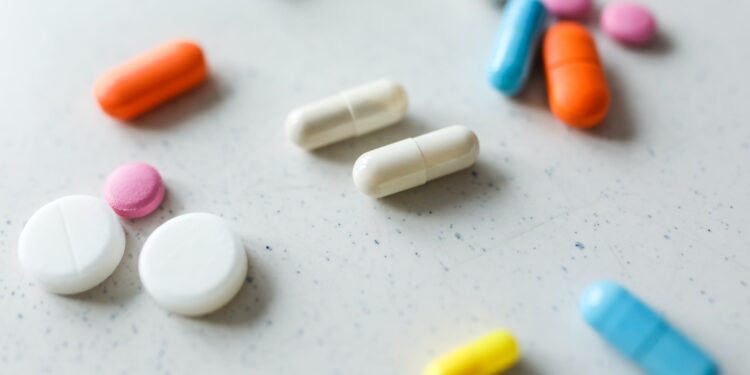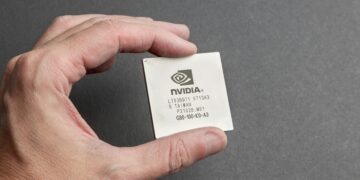As new GLP-1 oral pills enter the market, competition rises to challenge established injectables, sparking hope and concern over side effects
The weight-loss industry is gearing up for a seismic shift as companies race to introduce GLP-1 pills, potentially disrupting the dominance of injectable drugs led by Novo Nordisk (NVO) and Eli Lilly (LLY). With promising early data emerging from key players like Roche, Novo (NVO), and Pfizer (PFE), the market is abuzz with speculation on whether patients will prefer a daily pill over weekly or monthly injections.
While injectables like Novo Nordisk’s Wegovy and Eli Lilly’s Mounjaro have revolutionized obesity treatment with remarkable results, new oral versions of GLP-1 medications are showing potential to replicate — and in some cases, surpass — the efficacy of injectables. However, the question remains: Will these pills gain widespread acceptance, and can they overcome the common side effects that continue to plague GLP-1 treatments?
Roche’s Phase 1 Trial Results: Promising Yet Concerning
Last week, Roche released early Phase 1 clinical trial data for its oral GLP-1 pill, which demonstrated a 6.1% weight loss over four weeks. While this may sound promising, experts and investors remain cautious. The study’s sample size was small, consisting of only 12 patients, which is standard for early-stage trials but not enough to draw definitive conclusions. Moreover, the results align with similar weight-loss figures seen in other oral GLP-1 contenders, including those from Pfizer, Novo, and Lilly.
Roche’s data placed the company among the key players vying for a slice of the oral weight-loss drug market. However, investors were quick to react to concerns over side effects, leading to a 5.4% decline in Roche’s stock price last week. Nausea, vomiting, and dizziness — common side effects for both injectable and oral GLP-1 medications — remain a significant issue, and Roche’s drug was no exception.
Despite this, some analysts believe the side effects may improve as the drug advances to later stages of testing. Etzer Darout, an analyst at BMO Capital Markets, explained that the rapid titration of doses in early trials often leads to more pronounced side effects. “We expect tolerability profiles to improve,” Darout said, suggesting that real-world use might reveal a more favorable balance between efficacy and side effects.
Lilly Sets the Benchmark with Orforglipron
Eli Lilly’s oral GLP-1 candidate, orforglipron, has set the benchmark for other contenders in the field. In its Phase 2 trials, orforglipron demonstrated a weight loss of up to 14.7% over 36 weeks, making it the frontrunner among oral options. This high level of efficacy has bolstered investor confidence in Lilly’s ability to maintain its market dominance as the leading provider of obesity treatments.
JPMorgan analyst Chris Schott noted that while there are several new entrants to the market, many lack differentiation from established players like Novo Nordisk and Lilly. Schott expressed skepticism about Roche’s potential to compete effectively, particularly given the side effect profile and its timeline for market entry, which could be as late as 2029-2031, years behind orforglipron’s expected availability.
Novo Nordisk and Terns Pharmaceuticals Add to the Competition
Novo Nordisk, a leader in the injectable GLP-1 space with its drug Wegovy, has also entered the race for oral treatments. Recent data from Novo revealed that its oral candidate led to 13.1% weight loss after just 12 weeks, outperforming Wegovy’s early results, which showed 6% weight loss in the same time frame. This could position Novo to maintain its dominance even as the market shifts toward pills over injections.
Another player, Terns Pharmaceuticals, also released early data showing a 4.9% weight loss over four weeks for its oral GLP-1 candidate. While Terns is further behind in the race, the company’s efforts to move into Phase 2 trials next year add to the expanding list of options for doctors and patients.
Dr. Michael Weintraub, an endocrinologist at NYU Langone Health, emphasized the importance of having multiple treatment options for obesity. “No single patient responds the same way,” Weintraub explained. “The more options, the better,” especially as the industry seeks to address related health conditions like heart disease and liver disease, which are often associated with obesity.
A Crowded Market, but Room for Growth
As more pharmaceutical companies enter the field with similar products, questions arise about how new entrants can differentiate themselves from the market leaders. While efficacy is critical, a key differentiator may lie in reducing the unpleasant side effects that patients currently experience with both injectable and oral GLP-1 drugs.
Despite the market being flooded with new contenders, the demand for effective weight-loss treatments continues to grow, and many experts believe that competition will ultimately benefit patients. “We can’t yet predict which medication will work for a particular patient,” Dr. Weintraub pointed out, underscoring the need for a range of treatment options.
As trials progress and more data becomes available, the weight-loss industry is poised for a shakeup. Whether patients prefer daily pills or stick with injectables, the coming years will likely see significant advances in how obesity is treated, with companies like Novo Nordisk, Eli Lilly, Roche, and Pfizer leading the charge.
You might like this article:Intuitive Machines Secures $4.82 Billion NASA Contract to Lead Lunar Communication and Navigation











